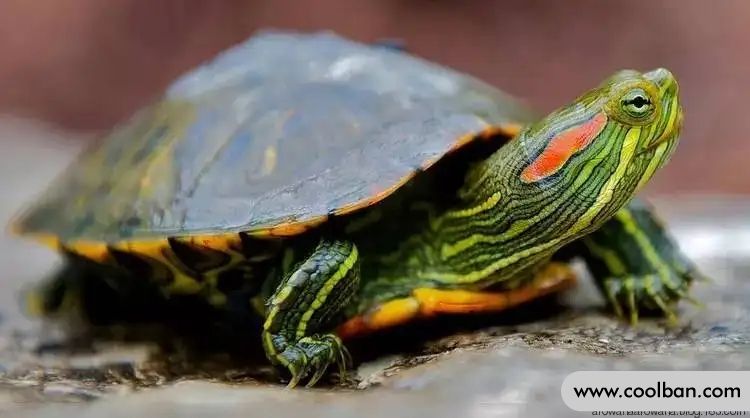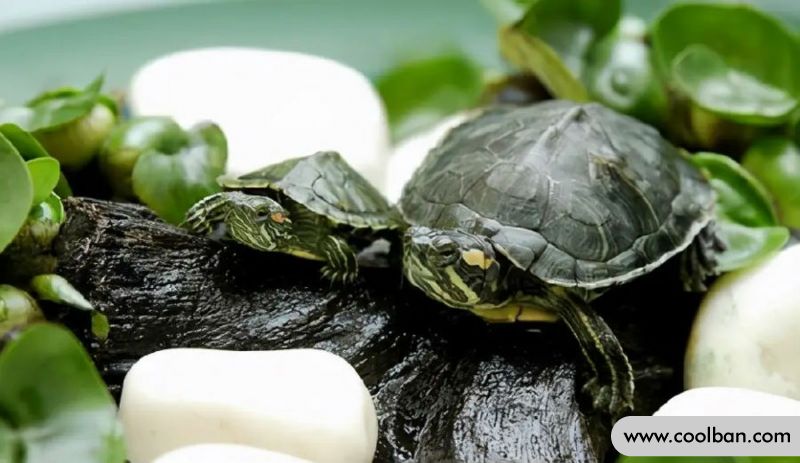How to feed Brazilian red-eared turtles?
The Brazilian red-eared turtle is what we often call the Brazilian tortoise, also known as the Mississippi red-eared turtle. Brazilian turtles are cheap, so they are often chosen for release. Because of this, the Brazilian tortoise was once identified as an invasive alien species.
The Brazilian tortoises that have been released into the wild have no natural enemies, have an amazing food intake, and reproduce quickly, which will have an impact on the native tortoise species and even the native natural ecology. Therefore, in many countries, this kind of release is prohibited, and even the sale of Brazilian turtles is prohibited and determined to be illegal. Some conservationists capture and breed Brazilian tortoises in the wild to protect the natural environment.

Morphological characteristics of the Brazilian red-eared turtle
The Brazilian red-eared turtle, also known as the red-eared turtle, because of the dark red on the sides of the back of its head. The difference between baby turtles and adult turtles is quite large, and the carapace pattern is not obvious, so many people like to keep Brazilian turtles.
The Brazilian red-eared turtle has a broad head and a flattened carapace that is emerald or apple-colored, with a prominent ridge in the center of its back. The scutellum has yellow and green annular stripes, the web is pale yellow, with irregular black circular, oval and symmetrical rod-like spots, the limbs are pale green with gray-brown vertical stripes, and the fingers and toes are webbed.
The Brazilian red-eared turtle is about 15-25 cm long. The head, neck, limbs and tail are covered with yellow-green mosaic stripes of uneven thickness, and there are two thick red stripes on both sides of the top of the head. The cornea is green with a black spot in the center. Each small scutellum of the carapace and plastron has yellow-green inlaid irregular spots in the center, and the pattern of each turtle is different.
The biggest feature of the skin of the Brazilian red-eared turtle (except the front end of the head) is that it is rough. The epidermis has fine particles or small scales. The protective layer can reduce the friction between the dermis and the outside world and the evaporation of water in the body. The easiest way to identify the red-eared turtle is the two red dots on the head and the emerald green body. The Brazilian tortoises that can be seen on the market are usually small, so the color is lighter, and the color of the Brazilian tortoise will change with the size and become darker.

Feeding points of the Brazilian red-eared turtle
The Brazilian red-eared turtle is the turtle with the lowest survival rate today. This is not because the tortoise is difficult to keep, but because many people who keep the tortoise don't take it seriously. In fact, the breeding of Brazilian turtles is still very simple. To prepare a good environment, there is no need to worry about eating and drinking.
1. Setting of rearing environment
The ideal rearing environment has certain minimum requirements. Each hatchling should have five liters of water, no deeper than the turtle's body length, so that the turtle's feet can rest on the ground to breathe when it comes to the surface. At the same time, they also need to build an island environment for them with bricks and stone chips. Floating islands are not suitable, as hatchlings often fail to climb up and are wasted effort. On the other hand, watch out for islands and decorations not to be dangerous obstacles, turtles can get stuck and drown.
2. The temperature range that the Brazilian red-eared turtle is adapted to
The water temperature that the hatchlings can adapt to is about 25 degrees Celsius; when the weather is cold, the air above the container should also be warmed, and a cover lamp can be added to the breeding box to get the best of both worlds. If the water temperature is still too low, you can add an electric heating tube to the water to adjust the temperature as much as possible.

3. Brazilian red-eared turtles need sunlight
Breeding boxes can be placed on balconies or windowsills if the tortoises have the opportunity to be exposed to direct sunlight. If this is not possible, the hatchlings must be exposed to UV light once or twice a week for about three to five minutes. The UV light should not be too close to the turtle, so as not to cause damage due to excessive light. Sunlight is still best, but care should be taken to use container glass that does not filter out the UV rays needed.
4. Purify water quality
It doesn’t matter if algae grows on the tank, it will not make the water in the tank smelly, the most important thing is to change the water regularly, otherwise the turtles will live in In stinky water, this environment encourages mold growth, so you need to change the water at least once a week.
